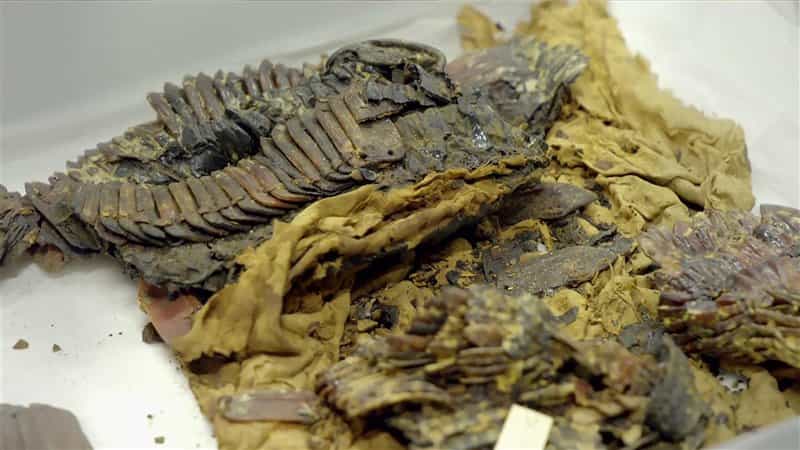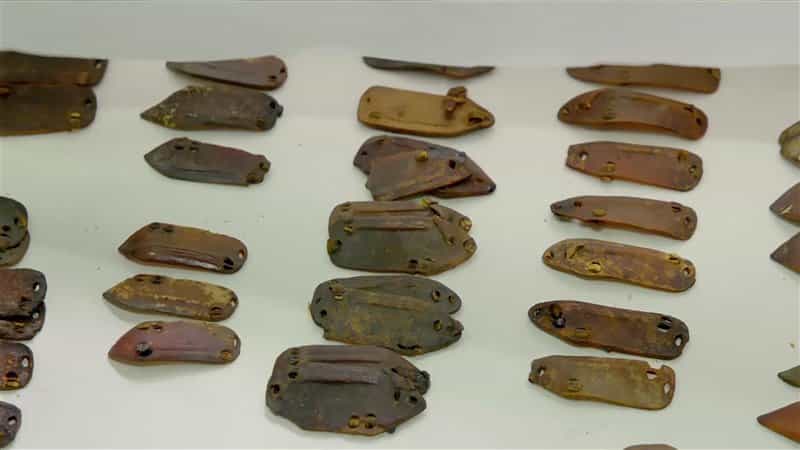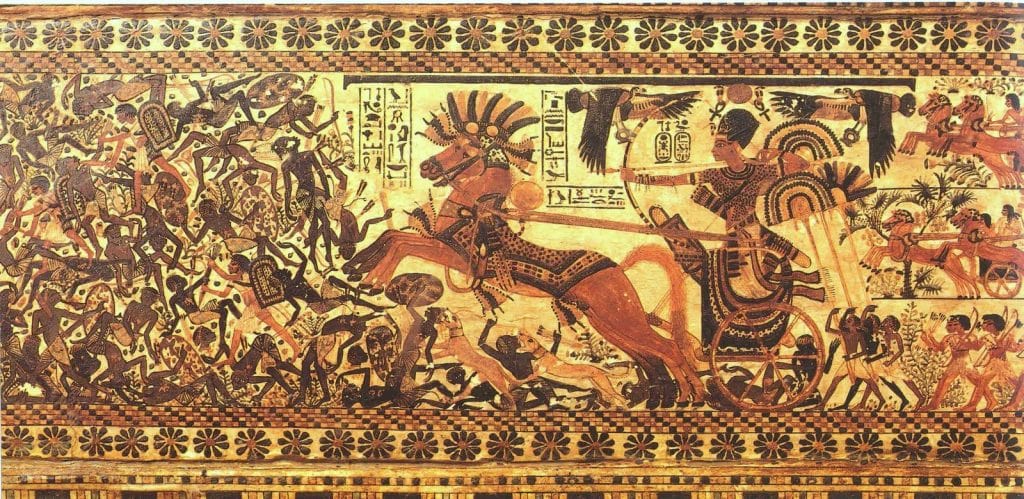The image of Tutankhamun is often perceived as that of a weak person with fragile health, incompatible with that of a warrior ready to command his armies on the battlefield. However, recent analysis of his armor has shown that it was actually used by the pharaoh, if not in combat, then as part of his military training.
It has been 100 years since Howard Carter discovered Tutankhamun’s tomb, and for the past century, researchers have scrutinized the mummy and its fabulous trousseau for new information about the pharaoh. However, not all questions have been answered.
In recent years, scientists have carefully analyzed the mummy and the thousands of objects found in the sovereign’s tomb using the most modern technology available. Although this has allowed us to learn more about the sovereign, it has not completely cleared up all the questions.
One of the most enigmatic pieces of his funerary treasure is the cuirass made of thick scales of red-dyed leather, arranged in horizontal rows. It is not clear whether it was worn on the battlefield or if it was placed there as symbols of power. Additionally, it is unclear if it truly belonged to Tutankhamun or if it was recycled from a relative to magnify the sovereign’s tomb like other burial objects.
Scientific tests conducted on this armor have revealed traces of abrasion along the edges of the leather scales, indicating that this armor was worn in some way and was not just a prestigious, ceremonial piece. This discovery contrasts with the traditional image of Tutankhamun as a weak and sick pharaoh.
The breastplate of a warrior
It is well-known that Tutankhamun was a young man with a thin complexion, suffered from a limp, and died before he was 20 years old.
This image was confirmed by a CT scan of the mummy in 2005, which revealed that Tutankhamun had a clubbed left foot and walked leaning on the outside.
Additionally, a phalanx of the index finger on the same extremity was missing, which is consistent with the meticulous reconstruction of his sandals from fragments found in the tomb, which had an added strap so that they did not slip off his foot when he walked.
However, this seemingly incompatible profile with that of a general who would have led his armies against his enemies on the battlefield was at least qualified in 2018. Tutankhamun’s armor was subjected to a photographic technique called Reflectance Transformation Imaging (RTI) which revealed clear signs of wear on the young pharaoh’s leather cuirass.
The discoverer of this evidence, Lucy Skinner, an ancient Egyptian leather expert at the University of Northampton, said it “means that the breastplate was heavily used. And it suggests that Tutankhamun wore it, perhaps even in combat.”
According to the official chronology, the pharaoh would not have launched his armies against one of the enemies of ancient Egypt, in this case the Hittite city of Kadesh, in present-day Syria, until the last year of his reign.
Egyptologists see it as unlikely that Tutankhamun would have personally engaged in combat, but it is possible that he would have received the necessary military training to fulfill his obligation to maintain order in the Nile valley.
A delicate piece
The revelation came during the filming of a documentary about Tutankhamun’s magnificent treasures. More than 5,000 objects have remained stored for decades in boxes in the deposits of the Egyptian Museum in Cairo, and now, with their transfer to the new Grand Egyptian Museum, they have undergone exhaustive studies and restorations.
The filmmakers contacted Skinner because he was one of the few people who had been able to examine the fragile remains of the breastplate, which is more than 3,000 years old. The piece suffered extensive damage, probably from being removed from its original box in the 1920s during Howard Carter’s excavation.
How the overlapping leather scales of the cuirass were made remains a mystery: “The ancient methods used to make this type of leather are not fully understood. To know them, you first have to understand a lot of complicated scientific processes,” according to the researcher.
Tutankhamun’s treasure?
What seems certain is that it was a piece that truly belonged to the pharaoh, something that cannot be said of all the objects found in his tomb.
The unexpected death of Tutankhamun, before he was 20, caught his subjects off guard, and a burial had to be improvised at the height of his position. To do this, objects intended for other characters in his family were recycled to complete his grave goods.
In several of the trousseau pieces, you can still see the trace of erased names on which that of the child-pharaoh was written, among them objects as important as one of the anthropomorphic coffins (the second), the chest for the canopic jars, or the Funerary mask itself, which seems to have belonged to his sister Meritaten. One more of the great mysteries around the most studied pharaoh in history.
Source: Alex Sala, National Geographic








